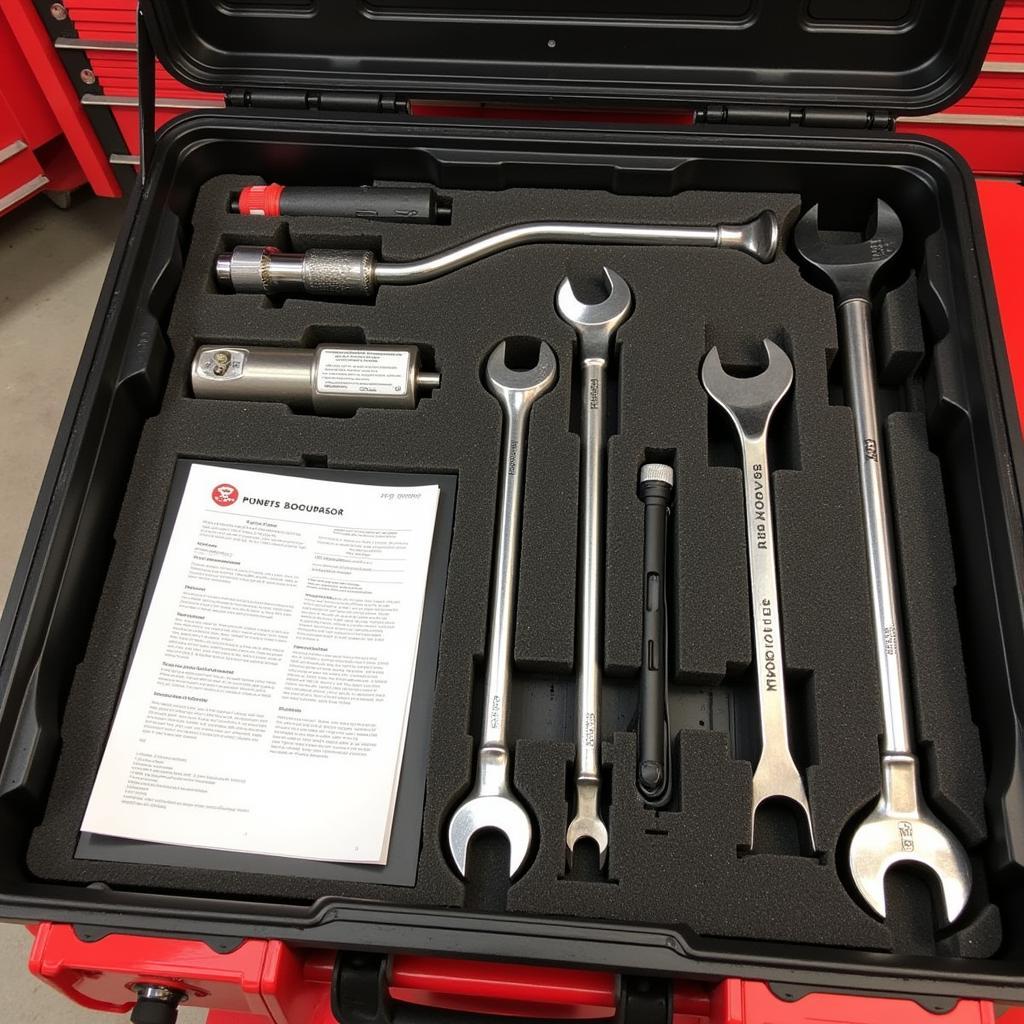Bringing car repair tools into Canada requires understanding the regulations and processes involved. Whether you’re a professional mechanic relocating or a hobbyist bringing your toolkit across the border, this guide will provide valuable insights to ensure a smooth transition. We’ll cover everything from duty fees and restrictions to essential documentation and tips for navigating the import process.
Navigating the Import Process for Car Repair Tools
Importing car repair tools into Canada isn’t as simple as throwing them in your truck and driving across the border. There are specific rules and regulations you must follow. First, you’ll need to determine if your tools are considered “used” or “new.” This classification will significantly impact the duties and taxes you’ll need to pay. Second, familiarize yourself with the Harmonized System (HS) codes for your tools. These codes classify goods for international trade and are crucial for accurately declaring your items to the Canada Border Services Agency (CBSA).
 Bringing Car Repair Tools into Canada
Bringing Car Repair Tools into Canada
Understanding Duties and Taxes on Car Repair Tools
The duties and taxes you’ll pay on your car repair tools depend on several factors, including the country of origin and the type of tools. Generally, tools manufactured in countries with which Canada has a free trade agreement, such as the United States or Mexico, are subject to lower or no duties. However, it’s essential to confirm the specific rules of origin and verify the eligibility of your tools. Also, be prepared to provide documentation proving the origin of your tools to the CBSA.
Essential Documentation for Importing Car Repair Tools
Proper documentation is paramount when bringing car repair tools into Canada. This includes a detailed list of your tools, including their make, model, and serial number (if applicable). You’ll also need proof of purchase or ownership, such as receipts or invoices. If your tools are used, providing evidence of their previous use, such as photos or workshop records, can help expedite the process.
 Essential Documents for Car Repair Tools Import to Canada
Essential Documents for Car Repair Tools Import to Canada
Tips for a Smooth Import Experience
To avoid any surprises or delays at the border, plan ahead and be prepared. Research the specific requirements for the types of tools you’re importing. Contact the CBSA directly if you have any questions or need clarification. Consider consulting with a customs broker, especially if you’re importing a large number of tools or if the process seems complex. They can assist with the paperwork and ensure compliance with all regulations.
“Accurate and comprehensive documentation is key to a hassle-free import process,” advises John Smith, a seasoned customs broker with over 20 years of experience. “Having all your paperwork in order can save you significant time and potential headaches at the border.”
Restrictions and Prohibited Car Repair Tools
While most car repair tools can be imported into Canada, some restrictions and prohibitions apply. For instance, tools that contain asbestos or other hazardous materials may be prohibited or require special permits. It’s crucial to research these restrictions beforehand to avoid having your tools confiscated or facing penalties.
 Car Repair Tools Import Restrictions in Canada
Car Repair Tools Import Restrictions in Canada
Bringing Specialty Car Repair Tools Across the Border
Specialty car repair tools, such as diagnostic equipment or specialized welding machines, may require additional certifications or approvals. These tools often have specific import regulations due to their complex nature or potential safety concerns. Ensure you have the necessary permits and certifications before attempting to import such equipment. “Always verify the specific import requirements for specialty tools, as they can differ significantly from standard hand tools,” recommends Maria Garcia, a senior automotive technician and import specialist.
Conclusion
Bringing car repair tools into Canada requires careful planning and adherence to specific regulations. By understanding the import process, preparing the necessary documentation, and being aware of any restrictions, you can ensure a smooth and hassle-free experience. Successfully navigating these steps will allow you to bring your essential tools into Canada and continue your automotive work without interruption. Need help finding the right tools? Check out our selection of car dealer tools canada and car paint tools for sale.
FAQ
- What are the HS codes for car repair tools? The HS codes vary depending on the specific type of tool. Consult the CBSA website for a complete list.
- How much duty will I pay on used car repair tools? The duty on used tools depends on their value, country of origin, and specific classification.
- Can I import car repair tools containing refrigerants? Refrigerants are subject to specific regulations. Check with the CBSA for import requirements.
- Do I need a customs broker to import car repair tools? A customs broker can simplify the process, especially for large shipments.
- What happens if I bring prohibited tools into Canada? Prohibited tools may be confiscated, and you could face penalties.
- Are there any restrictions on importing power tools? While generally permitted, certain power tools may have specific requirements.
- How do I find a reputable customs broker? The CBSA website provides a list of licensed customs brokers.
Need help bringing your car repair tools into Canada? Contact us via WhatsApp: +1(641)206-8880, Email: [email protected] or visit us at 910 Cedar Lane, Chicago, IL 60605, USA. Our 24/7 customer support team is ready to assist you.

Leave a Reply